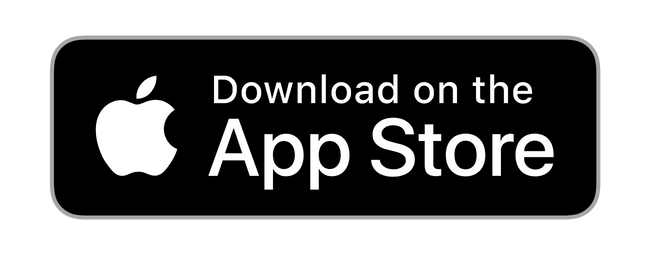
I’m sure you’ve been over this in a training course, boating rules and regulations keep people safe while on the water. However, there are a lot of things that are not covered in such courses. I don’t mean how to respectfully pass someone, or how to dock safely. I mean the unwritten boating rules that dictate how to act at the dock, or how to behave behind the helm. Generally speaking, how to be courteous and respectful to everyone else on the water.
Unfortunately, boating etiquette is not taught alongside coast guard programs or boater license exams. Yet new boaters are expected to behave correctly, without ever being told how to do so. A lot of these unwritten rules are passed down in boating communities, through family members, or, if you are unlucky, by witnessing a trespass first hand. It’s fairly safe to say that if you are new to the world of boating, it’s likely that no one has taken the time to teach proper etiquette, but they still expect you to know everything.
That’s all about to change. This article will dive into the unwritten rules every boater should know before you head out on the water.
Boating Rules At the Ramp

Boating etiquette is not all about the water! It starts at the dock or the boat ramp, because if you are at a boat ramp, chances are you won’t be alone.
1. Be efficient. Prepare your boat before you launch. Everyone wants to enjoy a day on the water, and waiting in long lines at the boat ramp is irritating. A good rule of thumb is to make sure that ropes are untied, gear and food is loaded, the plug is in, and the engine is ready to go. Oh, and please prepare your boat outside of the launch line. Nothing makes a crowded boat ramp more irritable than the person that backs up the line by running back and forth between their truck and boat while launching.
2. If you are on the ramp, be as quick as possible (this is why we prepared). Others are waiting to enjoy a day on the water as well.
3. Once in the water, move away from the ramp to allow others to launch. Try not to clog up the boat ramp. This rule also applies at the fuel pumps. Once you have fuel and paid, make space for the next boat.
Boating Rules On The Water
Once you are on the water, something as simple as your speed can quickly become an issue in the wrong situation. To avoid any glares, try following these suggestions when interacting with or coming close to other boaters.
4. Watch your wake. Be mindful of the waves you leave behind and where you are on the water. Large wakes in a crowded area can cause havoc, potentially swamping smaller boats and tossing boaters around in their craft. It can be dangerous, and is also a great way to make people angry.
5. Always try to give stationary boats a wide berth. An anchored or stationary vessel typically means that people are fishing, swimming, getting ready to tube/ski, or just generally relaxing. Try not to get too close, your wake or engine noise will definitely disrupt their activities. Give people fishing from the shore the same amount of space. You don’t want to snag their fishing line.
6. Don’t anchor in a channel. That’s like parking in the middle of a highway. You will know it is a channel by red and green buoys marking the sides. Also the numerous boats passing by.

7 Don’t anchor close to people you don’t know. If you’re entering an anchorage, any boats that are already there set the precedent for how to act. Leave plenty of room for the craft to drift and spin without hitting anything. A change in tide, wind, or current can move a boat in unpredictable ways, even while anchored.
8. Be mindful of others around you. Sound carries further on the water, and what you might have thought was a private conversation can easily become public knowledge. If you plan on being loud or playing music, try to stay downwind.
Guests
Whether you are welcoming guests on your boat or are a guest on someone else’s, always remember that everyone has different rules for their vessel. Be sure to respect their wishes and if you are unsure about anything, ask the captain. Below are some basic guidelines to keep in mind.
9. Educate guests, or ask to be educated. Make sure passengers are familiar with the boat and always show guests where to find extra personal floatation devices. If there is anyone new to boating, take a moment to explain the rules of your boat, like when they should stay seated vs stand.
10. Bring food and drinks. Often, there is no stopping for lunch, so what you bring is what you get. If a picnic is on the agenda, bring food and drink for yourself and others, no matter if you own the boat or are a guest on someone else’s.
11. Carry in, carry out. Keep track of your trash and take care of the water. Whatever you bring out should go back with you.
12. As a guest, offer to chip in for gas. Fuel on the water is not cheap, and the small gesture goes a long way.
Final thoughts
13. Be polite, and wave. Boaters are a friendly bunch, so say hello to others as you pass. It’s not just nice, it also acknowledges that you see them and are plotting a course accordingly.
14. Help others. This is the most understated rule. Etiquette on the water is about respecting one another. If you see someone struggling, don’t hesitate to offer help.
15. Oh, and in case you were still curious about bringing bananas on a boat, there is an old superstition that the smell of a banana can scare away fish. While not an actual rule, you might lose your snack to the sea if you pull out a banana around hardcore fishermen.
There are a lot of other unwritten rules out there, and they vary from waterway to waterway. If you are ever in doubt about how to act on the way, just try to be courteous and respectful. Consider the other boaters on the water and what you can do to make everyone’s time on the water more enjoyable.
Wavve Boating is available on the Apple App Store and Google Play Store via two subscription options of $7.99/month or $45.99/year. New users are offered a 14 day trial to see if the app is a fit for them.
About Wavve Boating
Founded in Kingston, Ontario, Canada, Wavve Boating (Wavve) is a mobile application designed for the recreational boater. With nautical charts from the National Oceanic Atmospheric Administration and Canadian Hydrographic Services, Wavve has been growing their consumer base across North America since May of 2018. Available on all Apple and Android devices, Wavve offers a simple platform so anyone can boat like a local. For more information visit https://wavveboating.com.








